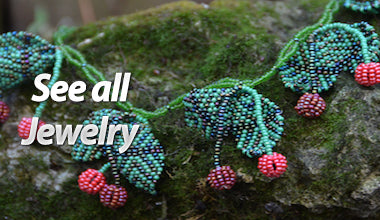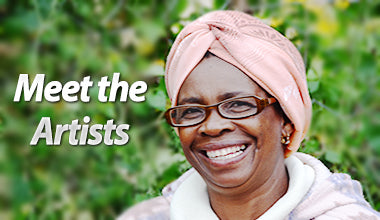Trekking in Kibera for Bone and Horn
 I’m not sure what drew me to Kenya initially. Maybe it was seeing the movie Out of Africa with Meryl Streep that romanticized the life of Karen Von Blixen. Or maybe it was watching life in the African bush on that old TV show, Mutual of Omaha’s Wild Kingdom as a child. Or maybe it was simply my never-ending curiosity and wanderlust that drew me to Kenya. Either way, I knew I would go there some day.
I’m not sure what drew me to Kenya initially. Maybe it was seeing the movie Out of Africa with Meryl Streep that romanticized the life of Karen Von Blixen. Or maybe it was watching life in the African bush on that old TV show, Mutual of Omaha’s Wild Kingdom as a child. Or maybe it was simply my never-ending curiosity and wanderlust that drew me to Kenya. Either way, I knew I would go there some day.
Well the day finally came when allure and opportunity came together. I have been known to ignore the sometimes-exaggerated concerns of many tourists and trek into areas in Africa that are declared “dangerous” to some.

But despite these fears by others, this is exactly what I did. I always simply asked myself, “Where is your sense of adventure?” Honestly, though I am always cautious, my experience on the continent has been nothing but positive.

Life in Kenya
One of the most meaningful elements of what I do is spending time with our artisans in Africa. It is when I feel the happiest – being a part of their lives and hearing their stories firsthand. This is what motivates me and reminds me why I’m doing this work in the first place. And it is their stories that I want to share with you.
I get excited when I tell the stories of these artisans but I’d much rather you see it for yourself. It is why I am dedicated to sharing my personal photos and videos so you can travel with me. My 2nd video, shot in Kibera, is now complete. Kibera, housed on the outskirts of Nairobi, is known for its extreme poverty; it’s Africa’s largest slum and one of the biggest slums in the world. There are approximately 2.5 million people in about 200 settlements, making up about 60% of Nairobi’s population but taking up only about 6% of the land.
The Kenyan government owns most all of the land so 90% of the people living in Kibera are tenants with no rights. Only about 20% of Kibera has electricity and until recently it had no running water. There are no clinics or hospitals, just charity organizations with makeshift facilities. The unemployment in this area is a staggering 50%, so the teaching of various skills is critical and that’s why workshops like Kazuri Ceramics (See my previous blog here) are so important to the African women living in extreme poverty.
I’ll admit I had some trepidation traveling to a country I had never been, to a city of roughly 5 million, and of course, I would be traveling by myself. I understood this would not be an easy journey for me physically, emotionally, or spiritually due to the conditions in places like Kibera that is ravaged by poverty and disease. But it is right there that I chose to spend a week working directly with these extremely talented artisans who shape beautiful jewelry and home decor from discarded cow bone and cow horn.

Friends and Artisans in Kibera
In the midst of these rambling shacks and narrow passages that carry the waste out to the street, I met Samwell and Wilkister, Victor and Bernard, and a host of other artisans eking out a living in this massive slum. I was very excited about meeting and collaborating with them to bring their work to video. It is the back-stories of these artists that I most want to share with you.

Kenya is a diverse culture made up of many different ethnic groups such as the Kikuyu 22%, Luhva 14%, Luo 13%, Kalenjin 12%, Kamba 11%, Kisii 6%, Meru 6%, other African 15%, and non-African 1%. These various ethnic groups typically speak their native language within their own communities, but the two official languages are English and Swahili. Like South Africa, it was very easy for me to communicate with the artisans since English is so widely spoken.
Turning Trash into Treasures
Often we eat meat, drink milk, and wear leather without a thought about the scraps that remain at the butcher. In Kibera, artists like Wilkister (pictured above) use the left over bones and horns from cattle to make beautiful jewelry and other home décor items. They will purchase these bones from the slaughterhouse for just a few dollars and then carefully craft them into works of art.

Through a careful selection process, the ideal bones are selected and brought back to the workshops in Kibera. Initially the bones are washed in bleach to whiten them and to remove all impurities.

Next the bones are cut into small usable pieces and then shaped with the use of a steel blade. A small drill is used at times to pierce the bone for final use in jewelry.

Depending on the desired outcome, the object will be left a simple plain white, dyed dark brown or given a batik pattern. Painting liquid candle wax onto the bone, submerging it in dye and then removing the wax, makes this batik pattern.

Lastly, the bone will be sanded and polished before it is assembled into the final product. This work helps to promote dignity in their society and to empower them economically. The sale of their handcrafts will help keep their children in school, put food on the table and provide a place to call home.

Please take a moment to walk with me and see how proud they are of their incredible handiwork by watching the video here (coming soon!).
These items from Kibera can be purchased from LivAfrika.com or by visiting our store at 3403 South MacDill Ave, Tampa, FL 33929.
To celebrate Father’s Day, LivAfrika is showcasing their work and serving up Tusker beer on Sat. June 20th here at our South Tampa location. We have men’s fishing shirts, bottle openers, baseball caps and even some tasty Biltong in stock, so make a point to come by ….. sip some beer and shop for Dad.
Cheers!
Sita




